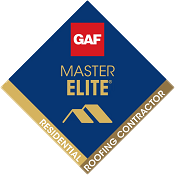As a Florida homeowner in the market for a new roof, you have much to consider. Like many things in life, a roof is not something to skimp on. You don’t necessarily want to go with the very cheapest option, nor do you want the easiest option, as both can come with problems later on.
When you consider hurricanes and the occasional flash storm, our roofs are bombarded by the elements on a constant basis. Only the best roof will do.
Deciding on the best roof isn’t so easy, however. Every homeowner has different needs. You may want a roof that is affordable yet still looks nice, or you might want a roof that lasts and remains strong for up to fifty years or more.
To help you make the best decision, we have compiled a roofing guide for Florida homeowners just like yourself. First, you must decide what you need the new roof for. Are you building a new home from scratch, or is your goal to replace your old roof with one that is brand-new?
Roofing for New Home Construction
Constructing a new home is an exciting time. You get to choose the architecture, the number of rooms, and the style of your new home. You also get to select the perfect shape and type of roof.
When deciding on a new roof for a custom home, you must consider the roof shape. There are many roof shapes to choose from. There is the open gable, box gable, dormer, hip, gambrel, mansard, flat, jerkinhead, Dutch gable, cross hipped, and combination roof, among others.
Gable roofs tend to be most problematic in hurricane-prone areas like Florida. The frames need to be constructed with ultra-strong supports. If the supports weaken, the entire roof could collapse.
Hip roofs, on the other hand, are excellent for high wind areas. Hip roofs can be manufactured in highly complex designs and can be constructed with shingles, metal, or tile.
Work with your home builder to find the shape and type of roofing material you want, and you should be able to find the ideal home protection for the area you live in and budget.
Roof Replacement
If you thought selecting a new roof for a custom home seemed complicated, replacing a roof can be even more confusing. Not only do you have to select the shape and type of your new roof, but you have your old roof to contend with. Should you have the new roof placed right on top (you are allowed two layers of asphalt on your roof) or should you have the old roof stripped away? The latter can increase your costs, but the former comes with limitations. For example, stripping the old roof allows your roofers to place a waterproof membrane underneath your roof supports, ensuring your family stays protected no matter what Mother Nature throws your way.
While stripping the roof allows for better protection, doing so can increase your costs.
If you are switching from asphalt shingles to tile or shingles to metal or vice versa, you need to consider the qualities you want in the materials. Are you looking to save money, or do you want something that stands up to the strongest storms imaginable? Let’s look at some qualities of common roofing materials now.
What Qualities Do You Want in a Roof?
Aesthetics
Homeowners building a custom home and those requiring re-roofing alike would prefer a roof that looks extraordinary. You don’t want to be the only family on the block with a shoddy roof, after all. Therefore, you may be looking for shingles, tiles, or a metal roof that has the look and style you have in mind. The higher the cost, generally speaking, the better looking the roof. The good news is that many roofing materials come in a variety of colors and shapes that allow for any roofing design you can imagine.
Durability
You want a roof that will hold up to the strongest of storms, including hurricanes. Florida roofs take quite a beating, and shingle roofs can be adequate enough to keep you protected. The same with tile roofs. Metal roofs will offer the most protection, but only if the installation is successful. Even metal roofs can leak if the installation fails. The higher the cost of the roofing materials, the more protection you are going to get from the elements, such as waterproofing.
Low Maintenance
You might spend less on a roof in the short term, but you may end up spending more on your roof over the cost of its lifetime when you add up maintenance costs. The higher the cost of your roofing materials, the less maintenance they generally require. Asphalt shingles can save you money in many cases, but shingles only last for so long. Metal roofs last the longest and don’t have to be maintained for years, though they can set you back much more than a shingle roof would.
Long-Lasting
A metal roof can last for several decades, keeping you and your family absolutely safe. Shingle roofs can protect you, but a terrible storm can damage your roof more easily, leading to costly repairs or the need for replacement. Tile roofs look fantastic and can stand the test of time, but even tiles can begin to wear over time. The more you pay for roof materials, the longer they tend to last before a complete re-roofing becomes necessary.
Affordability
Every homeowner wants to save money and it’s a good bet that you are no different. You can save money on a roof only to realize that it needs tons of maintenance and repairs at every corner. On the other hand, you could end up spending too much on a roof, such as selecting metal when you could get a good-looking tile roof for less. The question comes down to how many qualities are you willing to sacrifice just to save a few bucks?
Comparing Roofs – Which Roofing Material is Best?
Shingle Roofs
The asphalt shingle has been a popular choice for roofing since the early 1900s. Shingle roofs comprise 80% of North American roofs for good reason. Shingles can be attractive and low cost, and many of the best brands of shingle roofs are incredibly durable. Shingle roofs can also be made into a variety of popular styles, including Gambrel, Hip structures, Gabled, and more.
The downside to shingles is that they are considered the least energy-efficient of all other roofing materials.
The shingles tend to absorb heat from the sun very well, which causes the temperatures in your attic to rise. However, some shingle manufacturers are now selling energy-saving shingles that can save you as much as 20% on your home energy costs.
The average residential roof is about 1600 square feet, and a complete roof replacement can cost between $4000 and $6400, depending on the style, slope, and other factors.
A good shingle roof can last up to 25 years, but damage can begin to show after five or six years. The shortest amount of time a shingle roof lasts, on average, is 10 to 12 years.
Most asphalt shingles are marked with a 20 to 50-year warranty. Though many shingles sold today are marketed as coming with “Lifetime” warranties, if you read the fine print, you will see that the actual coverage of the warranty is more like ten to fifteen years.
Tile Roofs
Humans have been using tile to roof their homes since the Neolithic age. Tile is popular as a roofing material because of its resiliency against varying weather conditions. Tile can last up to 50 years, standing up to even the harshest winds. In fact, with proper installation, tile roofs can withstand winds as strong as 125 miles per hour.
With such a low life cycle cost, you will save on maintenance alone, with tile requiring very little of it to retain its beauty and strength.
Tile roofs can mimic slate or wood, complementing any architectural style. Roofing tiles also come in a wide variety of colors, sizes, and shapes.
Roofing tiles are considered one of the most eco-friendly roofing materials, as the material doesn’t deplete the earth’s natural resources, and old tiles can be converted into new roofing materials with ease.
Metal Roofs
Metal is a sensible roofing option that can also be quite attractive. Metal is also nearly impervious to high winds and storms.
Metal roofs come in a variety of metals and alloys, including Galvanized steel.
The downside to metal roofs like galvanized steel roofing is that the metal can corrode, especially if you live near a coastal area.
Aluminum is a good option for those near the beach, as the metal won’t corrode as easily while keeping a pristine appearance.
An additional downside to metal roofs is that they are sometimes more expensive to install than other roofing systems. This is due to the fact that metal roofing requires specialized training, tools, and equipment. General contractors are typically not suited for metal roofing projects, while specialists can make easy work of the job. This specialization means that you can expect to pay more when roofing with metal, though you are getting a roof with extended life as a beneficial enticement.
The cost of installation for a metal roof depends on the complexity of your design and the type of material installed. You can expect to pay around $350 to $425 per square foot, with aluminum costing an additional $100 per square foot.
Copper is the best metal roofing you can buy, as the copper material can last for hundreds of years. However, the cost can be prohibitive for many homeowners. Copper would set you back $900 to $1,400 per square foot just for materials, but probably wouldn’t need replacement ever.
You may not know this, but metal roofing is incredibly light, which means that your old asphalt roof can be re-roofed with metal roofing placed right on top. This also eliminates the extra cost and hassle that are usually associated with shingle tear-off jobs.
A major benefit to having a metal roof installed is that the sheeting or shingles can last up to 50 years or longer. With such incredibly low life-cycle cost, you will save money you might otherwise spend on maintenance and repairs.
Consider Roofing Maintenance and Repairs
Asphalt shingles can begin to show signs of damage and wear and tear after five to ten years. Even small damage to the shingles or their seals can lead to leaks and moisture damage. You may pay less for asphalt shingles, but your costs could rise through the years as shingles break, seals fail, and branches cause puncture wounds that can lead to costly home renovations. While shingles can be an attractive and budget-friendly option, you may want roofing that is considered more durable if you can afford it. Tile will stand up to damage more than asphalt shingles, but metal beats both shingles and tile combined, hands down. Tile may experience problems faster than metal will, with metal giving you the most value for your dollar due to the low maintenance costs.
Shingle Damage
The most common causes of shingle damage are collisions with branches and other debris. Granule loss is another common cause of damage that can occur because of regular wear and tear, severe weather, and blistering from the hot sun. Moss growth can also shorten the lifespan of your shingle roof. In hot weather, the tar used to seal asphalt shingles can stick to anything, contributing to possible leaks. The shingles can also break easily in extreme weather, especially when walked on.
Worn-Down Roofing Materials & Other Problems
Even tile and metal roofing can be susceptible to shifting, loose and broken slats or shingles, and broken seals. Many times, these instances come down to shoddy installation or freak accidents involving wild storms. You can put the odds in your favor that your roofing will last by selecting the highest quality materials that offer extreme durability and that are installed by experienced roofing professionals.










